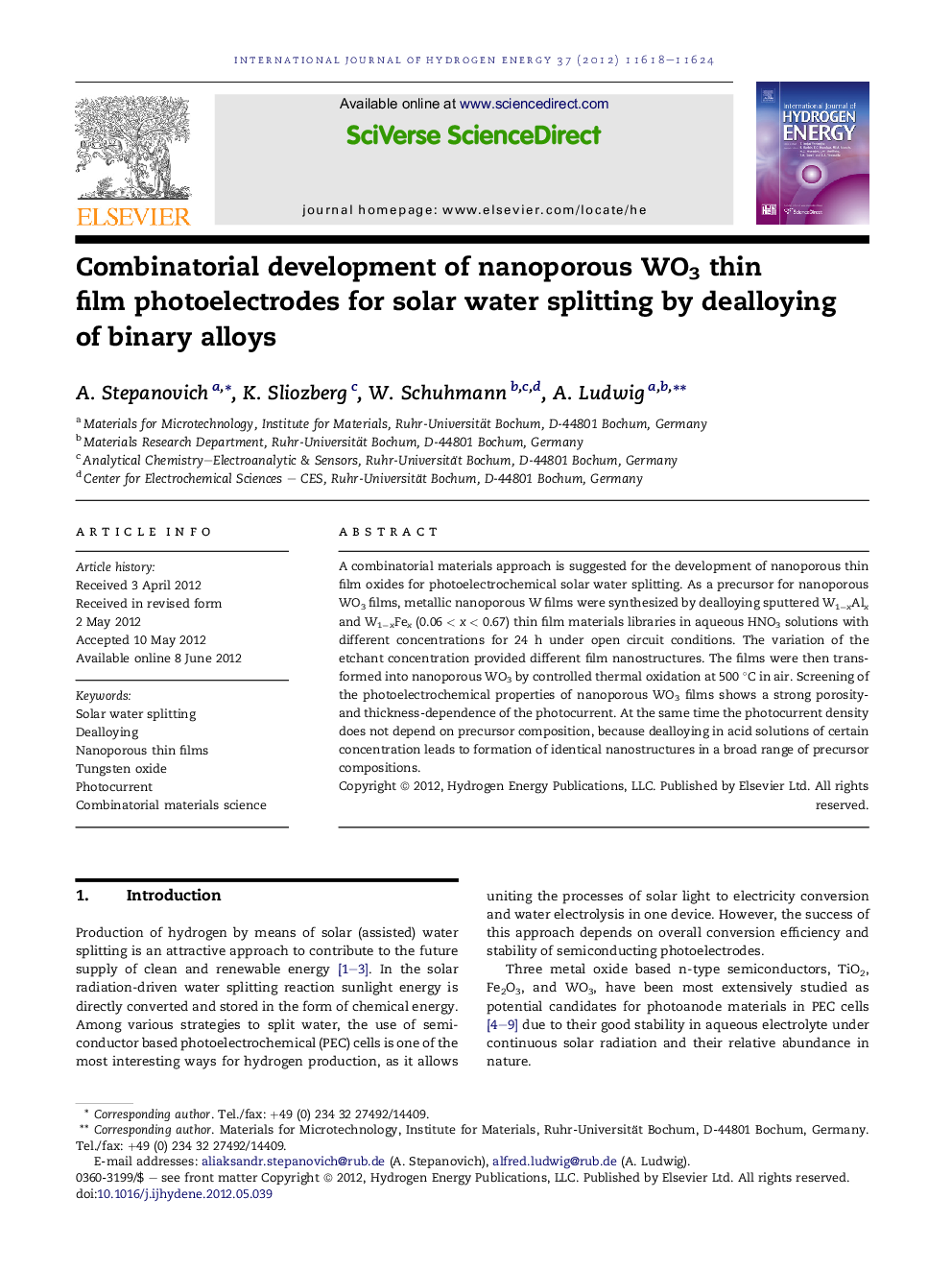| Article ID | Journal | Published Year | Pages | File Type |
|---|---|---|---|---|
| 1275029 | International Journal of Hydrogen Energy | 2012 | 7 Pages |
A combinatorial materials approach is suggested for the development of nanoporous thin film oxides for photoelectrochemical solar water splitting. As a precursor for nanoporous WO3 films, metallic nanoporous W films were synthesized by dealloying sputtered W1−xAlx and W1−xFex (0.06 < x < 0.67) thin film materials libraries in aqueous HNO3 solutions with different concentrations for 24 h under open circuit conditions. The variation of the etchant concentration provided different film nanostructures. The films were then transformed into nanoporous WO3 by controlled thermal oxidation at 500 °C in air. Screening of the photoelectrochemical properties of nanoporous WO3 films shows a strong porosity- and thickness-dependence of the photocurrent. At the same time the photocurrent density does not depend on precursor composition, because dealloying in acid solutions of certain concentration leads to formation of identical nanostructures in a broad range of precursor compositions.
► Nanoporous films were fabricated by the dealloying of binary alloys. ► The nanostructure of dealloyed films strongly depend on etchant concentrations. ► The thickness of films strongly increases after dealloying (on average 3 times). ► Photocurrent strongly depends on film thickness and porosity. ► Optimal film thickness and etchant concentrations were found.
